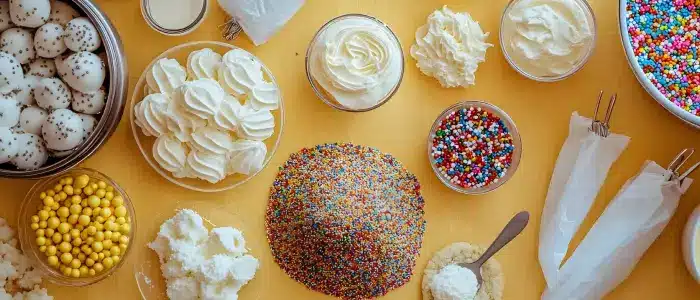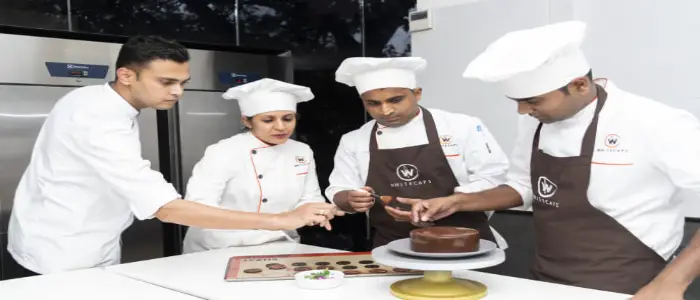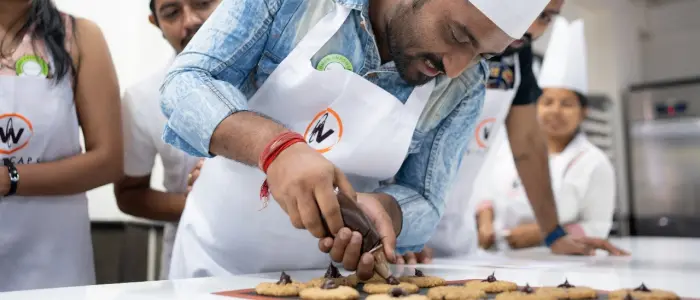Whenever anyone mentions baking, the first thing that comes to mind is sugar. However, sugar is not merely a sweetener; it is an essential ingredient in bakes, affecting texture, colour, structure and even moisture content. Whether your final product is crisp or soft, the sugar you add will make it taste and feel a certain way.
In Whitecaps International school of pastry, we regularly remind our pastry students that sugar is not merely sweet, but science. The key to professional baking is to first understand various kinds of sugar.
What Does Sugar Actually Do in Baking?
Sugar does not simply render desserts sweet. It also:
- Adds texture: Fine sugars make smooth batters, rougher ones crunchy.
- Influences moisture: brown sugar makes cookies chewy, and white sugar, crisp.
- Browning effects: Caramelisation and Maillard reaction.
- Fixes structure: Preferentially in whipped products such as meringues and sponges.
Simply put, sugar determines the character of your bake, like the colour of its crusts and the softness of its crumbs.
13 Main Types of Sugar Used in Baking
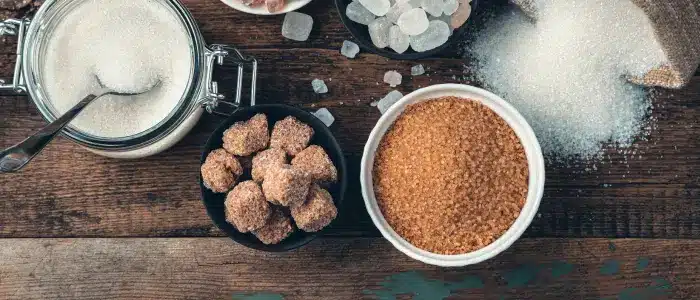
According to a LocalCircles survey conducted in September 2024, more than half of urban Indian families enjoy sweet bakery items and packaged treats such as cakes, biscuits, and chocolates at least three times a month.
Let’s explore the most common sugars used by professional and home bakers, along with how they behave in your recipes.
1. Granulated Sugar: The Classic All-Purpose Sweetener
What it is:
Regular white sugar is in the majority of pantries. It is processed, and the crystals are uniform in size, dissolving in moderate heat.
How it’s used:
Ideal with cookies, cakes, and muffins, where the structure is important. It blends well with butter, and it forms air pockets, making your baked goods light.
Baking effect:
Gives crispness and volume as it traps air during creaming, and is known to provide even browning in the oven.
Tips:
Do not substitute brown sugar with it 1:1; it is not moist and may dry out when baked.
Skim Tip for Readers:
When your cookie becomes too spread, sprinkle less grain sugar on it or combine it with some brown sugar to keep it steady.
2. Brown Sugar: For Chewy and Moist Textures
What it is:
Brown sugar is just white sugar, but with molasses added to it, giving it a darker colour, more flavour and a slightly sticky texture.
Types:
Light brown sugar: Sweet caramel taste; ideal in cakes and muffins.
Dark brown sugar: Rich molasses colour; use in gingerbread and sticky toffee pudding.
How it’s used:
Best with recipes that need moisture and richness of flavour – consider chewy cookies, banana bread, or caramel sauces.
Baking effect:
Brown sugar contains molasses, which is useful in keeping the moisture content, resulting in soft and dense textures. It also adds to the caramel flavours during baking.
Tips:
Store brown sugar in a container that is airtight and place a slice of bread or a slice of an apple to prevent the hardening.
Skim Tip:
When your cookies are too crispy, you can replace half of your white sugar with brown sugar, which will give them the chewiness they lack immediately.
3. Caster Sugar: The Baker’s Secret Weapon
What it is:
Castor sugar is also called superfine sugar, and its crystals are smaller than those of the granulated sugar, dissolving faster to dissolve. Pastry chefs tend to use it because of its balance of sweetness and smoothness.
How it’s used:
Ideal with delicate dessert sponges, macarons, soufflés, and meringues, where fine batters are required.
Baking effect:
Castor sugar is easily soluble and used to produce a uniform texture and even rise. It also makes cakes soft, crumbly and fine structured.
Tip:
In case you have no caster sugar, add some granulated sugar to a blender and pulse it for a few seconds, no more, this way the crystals are smaller but still not a fine powder.
Skim Tip:
Want a lighter sponge? Replacing granulated sugar with caster sugar is better to achieve aeration and texture.
4. Icing Sugar: For Frosting, Dusting, and Decoration
What it is:
Icing sugar, also called powdered or confectioners’ sugar, is granulated sugar that has been finely ground into a fine powder and combined with a little bit of cornflour to prevent forming lumps.
How it’s used:
Applied mostly in frostings, glazes, buttercreams and dusting pastries. It dissolves immediately and gives smooth, glossy finishes.
Baking effect:
It does not add structure and makes toppings and fillings look and feel great.
Tip:
Always strain icing sugar before use to prevent lumps in your frosting.
Skim Tip:
To make silky buttercream, mix icing sugar with softened butter; beat at a minimum of 5 minutes -it makes it so light.
Bonus: Raw Sugar and Demerara
What it is:
Raw or demerara sugar is not as refined, having large crystals of golden colour and a toffee taste.
How it’s used:
Spread over muffins or pies to be crunchy and golden.
Baking effect:
Provides a homespun touch with a hint of caramel.
Tip:
It does not dissolve well, so do not use it in creaming.
5. White Sugar – The Everyday Sweetener
What it is:
Pure cane or beet sugar that is clean and neutral sweet and has small white crystals.
How it’s used:
A cake and cookie ingredient, as well as pastry and most other baked desserts.
Baking effect:
Assists in aeration, browning, and the formation of light, soft textures.
Tip:
Measure precisely, too much may stiffen the crumb or spread cookies.
Skim Tip:
Still best when it comes to a regular texture and volume in daily baking.
6. Jaggery – The Natural Caramel Note
What it is:
Crude sugar is produced by the simple refining of concentrates of sugarcane or palm sap, and is abundant in minerals.
How it’s used:
Usually used in Indian and rustic-style baking to add deep flavour and colour.
Baking effect:
Moist and earthy sweet, perfect in spiced or heavy cakes.
Tip:
Its coarse texture can lead to patchy sweetness, so grate or melt before mixing.
Skim Tip:
Useful in both standard and fusion desserts due to its warm, earthy flavours.
7. Molasses – The Dark Depth of Flavor
What it is:
A dense syrup that remains after the refining of sugarcane or beet juice.
How it’s used:
Added to gingerbread, spice cakes and heavy cookies to make them strongly scented.
Baking effect:
Increases color, moisture and a warm bitter taste which suits the sweetness.
Tip:
A small portion does an immense amount–too much may overwhelm other light tastes.
Skim Tip:
Spread very thinly so that you can get that desirable level of sweetness and spiciness.
8. Turbinado Sugar – The Rustic Crunch
What it is:
Raw brown sugar of large and golden crystals and of a light molasses taste.
How it’s used:
Best to sprinkle on muffins, pies, or cookies to make a crunchy top.
Baking effect:
Brings out fragrant caramel flavours and glitzy appeal to bakery products.
Tip:
Do not attempt on tender batters–it has no assurance of dissolving.
Skim Tip:
Perfect topping, when you require glitz and crunch.
9. Muscovado Sugar – The Bold Brown Sweetness
What it is:
Raw cane sugar that contains high levels of molasses, sticky and sweet.
How it’s used:
Perfect with brownies, fruitcakes, and chocolate desserts that require richness.
Baking effect:
Adds deep color, chewiness and the smoky toffee taste.
Tip:
Break before use-clumps may have an impact on the ratios of dry ingredients due to their moisture.
Skim Tip:
Decide when you need deep, dark sweetness and additional chew.
10. Demerara Sugar – The Golden Crystal
What it is:
Unrefined sugar that is rough and light amber in color and has light crunch.
How it’s used:
Very nice as a topping on muffins, scones and cookies, to make them shiny and flake-like.
Baking effect:
Produces a nice crust and soft caramel undertone.
Tip:
Use brown sugar in place of white, though it will be less crunchy.
Skim Tip:
Best for adding golden color and crisp topping texture.
11. Stevia – The Calorie-Free Substitute
What it is:
A natural sweetener that is intensely sweet and free of calorie content and is made of plant products.
How it’s used:
Added to low-sugar or diabetic-friendly baked goods.
Baking effect:
Provides sweetness with minimal bulk or caramelization and therefore, texture can vary.
Tip:
Add moist ingredients such as applesauce or yoghurt to counteract dryness.
Skim Tip:
An ideal light and health-conscious baking with a sweetened flavour.
12. Coconut Palm Sugar – The Gentle Caramel Sweetener
What it is:
Sugar that is prepared from the sap of the coconut palm flower and has a deep golden color.
How it’s used:
Useful in cookies, quick breads and frostings to impart a gentle caramel flavour.
Baking effect:
Lightly sweet and a touch of earthiness, but not brown.
Tip:
Replace white sugar with it in most recipes in a 1:1 ratio.
Skim Tip:
A low-GI, all-natural swap that adds a soft caramel taste.
13. Isomalt – The Sugar Artist’s Secret
What it is:
A beet sugar-derived sugar alcohol, primarily employed in sugar art.
How it’s used:
Popular cake decorations, sugar-free baked goods, and pulled candy.
Baking effect:
Anti-crystallising and remains transparent, best in glossy displays.
Tip:
Heat very gently; too much heat will result in cloudiness or brittleness.
Skim Tip:
Excellent in spectacular sugar work and steady, clear patterns.
What Happens If You Use the Wrong Sugar in Baking?
Substituting one sugar for another may seem harmless, but in baking, every gram counts. Using the wrong sugar can alter both flavour and structure:
|
Mistake |
Result |
Fix |
|
Using granulated instead of caster sugar in a sponge |
Coarse texture, uneven rise |
Blend granulated sugar to make superfine sugar |
|
Using brown sugar instead of white in meringue |
Sticky and dense meringue |
Use caster sugar for perfect peaks |
|
Skipping sugar altogether |
Flat, pale, dry bake |
Replace at least 60% with a suitable sweetener |
|
Overusing icing sugar in the batter |
Gummy, heavy texture |
Reserve it for frostings and glazes |
The Science Behind Sugar in Baking
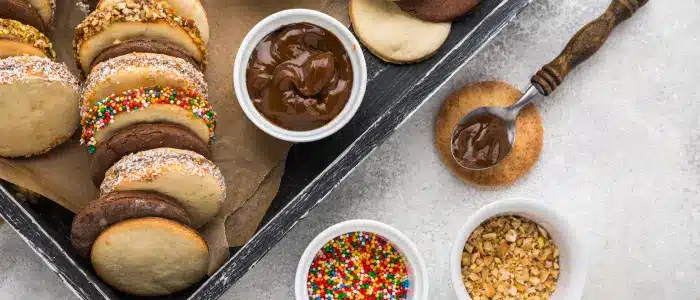
The combination of sugar and fat forms air bubbles, which involve trapping of moisture, resulting in lighter textures. Heat causes it to caramelise, giving it flavours and the golden-brown crusts that are so good.
Did you know? The home-baking market has been growing at 20 percent annually since 2020, according to NDTV Food, mostly because of the rising popularity of dessert making. This causes the need to learn about baking ingredients and, particularly, sugar, all the more significant.
And to understand how professional chefs master sugar’s texture and sweetness balance, explore the diploma baking and pastry course in Bangalore today.
Tips to Work with Sugar Like a Pro
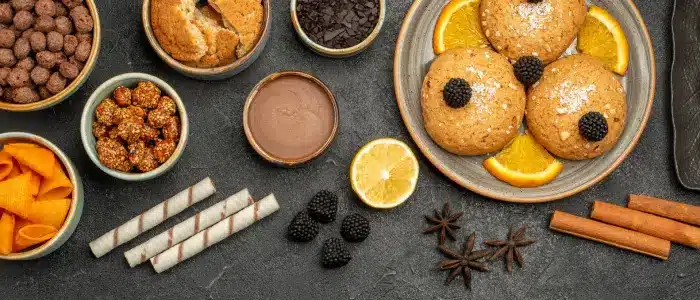
Sugar should always be measured by weight and not by volume. Minor changes may influence texture.
- Work with room temperature ingredients: Sugar dissolves more and mixes well.
- Watch your oven temperature: Excessively high and the sugar burns too quickly; excessively low and your bake will be pale.
- Understand your ratios: The larger the amount of sugar, the more the crumb will be soft the smaller the amount of sugar used, the harder the texture.
- Combine sugars: Brown and white sugar are frequently the ideal combination of flavour and water.
Pro Insight:
Advanced learners in Cake Engineering study the science behind sugar structure and caramelisation; a focus area in our professional cake making course in Bangalore.
Conclusion
Each kind of sugar has its character, such as the fine smooth texture of the caster sugar or the rich taste of brown sugar. Knowing these differences assists you in being in charge of texture, taste, and colour in your desserts.
Granulated sugar adds texture, brown sugar maintains moisture, caster sugar finishes the texture, and icing sugar completes the finish. Apply them wisely and you will be surprised at how a small adjustment can change a whole bake.
At Whitecaps International, we consider mastering baking to start with familiarity with your ingredients. When you know sugar, you open the vocabulary of accuracy, patience, and creativity – the world of professional pastry. Book your course now to become a professional.
FAQs
- Can I replace brown sugar with white sugar in cookies?
Yes, but expect a change in texture; white sugar makes cookies crispier, while brown sugar keeps them soft and chewy.
- What’s the difference between caster sugar and icing sugar?
Castor sugar has fine crystals that dissolve quickly, ideal for batters. Icing sugar is powdered and used for frostings or dusting.
- Is raw sugar healthier than white sugar?
Nutritionally, both are similar. Raw sugar has slightly more minerals, but the difference is minimal in baking quantities.
- Why does sugar affect the color of baked goods?
Sugar caramelises under heat, giving your bakes a golden-brown hue and adding complex flavours.
- Can I use honey or jaggery instead of sugar?
Yes, but reduce liquid ingredients slightly and lower oven temperature by 10°C to prevent over-browning.

